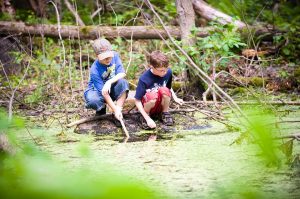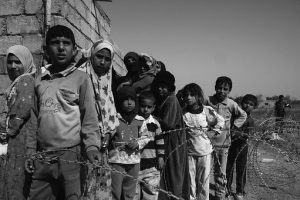JOURNAL ARTICLE-FEBRUARY 2019
Coates, K. (2019). Japanese Media at the Beginning of the 21st Century: Consuming the Past by Katsuyuki Hidaka (review). The Journal of Japanese Studies, 45(1), 191–195.
Abstract
Hidaka’s award-winning Japanese Media at the Beginning of the 21st Century is an important book, a personal translation of his 2014 study. It was selected as the Outstanding Book for 2015 by the Japan Communication Association, an appropriate recognition for an insightful study about the intersection of historical understanding and the representation of Japan’s postwar miracle in film and television. As described by Hidaka, the book was extremely well received at the time of publication in Japanese, selling well with the public and attracting critical acclaim.
Japanese Media at the Beginning of the 21st Century brings together two important themes: the transformation of Japanese society in the postwar era and Japan’s effort to come to terms with the dramatic transitional decades of the 1960s and 1970s. For the Western world, these decades saw the relegation of most memories of Japan’s wartime aggression to the background and the emergence of a new narrative, one based on economic resurgence, a reputation for technological innovation, and global prominence.
Markey, S., Halseth, G., Ryser, L., Argent, N., & Boron, J. (2019). Bending the arc of the staples trap: Negotiating rural resource revenues in an age of policy incoherence. Journal of Rural Studies, 67, 25–36.
Abstract
Different political and economic contexts are shaping how resource royalties/revenues are collected and distributed back into the regions from which the resources are extracted. Within the context of peripheral resource community and regional development lifecycles, and drawing from staples theory and evolutionary economic geography, we look at the changing power relationships between the Province of British Columbia and the communities of the Peace River region in Canada through two sets of revenue sharing negotiations: the Fair Share Agreement and the Peace River Agreement. In the former case, the lack of an explicit provincial policy regime around the redistribution of state royalties and taxes created space for the region’s communities to seize the agenda and maximize benefits from their negotiations with the Province. These communities achieved this through extensive research, preparation, and a coordinated negotiating plan. Following the success of this agreement, however, the region was unable to remain cohesive. In the latter case, the Province recaptured the agenda and set the framework for negotiating a new agreement. The result was a fragmentation of regional coherence and collaboration, and a recapturing of ‘power’ by the provincial government. As resource-dependent places and regions struggle along the historically defined pathway or ‘arc’ of staples dependence, the communities of the Peace River region have worked to initiate a break from that pathway or to ‘bend the arc’ of the staples trap. Coincident with such local initiatives, this research also highlights how senior governments, themselves dependent upon natural resource revenues, have worked to limit opportunities for resource-dependent places to achieve this change.
Rothwell, D. W., Weber, B., & Giordono, L. (2019). The Oregon Earned Income Credit’s Impact on Child Poverty. Open Science Framework.
Abstract
Oregon has a refundable earned income tax credit (OEIC) that is equal to 8 percent of the Federal Earned Income Tax Credit (EITC). In 2017, Oregon introduced a unique supplement to the OEIC that provided an additional 3% of the Federal EITC to families with children under age 4. To date, there has been no research examining the impact of the OEIC on child poverty. Using data from the Current Population Survey, we simulate the static effects of this unique state OEIC on overall poverty, child poverty, and early child poverty rates in Oregon. We find that the OEIC does not yield a change in the estimated headcount poverty rate for either children or young children. However, focusing exclusively on changes in poverty rates underestimates the impact of the OEIC. The estimated impact on the poverty gap and poverty severity is greater – about 2 to 4 percent. Children and young children in families closer to the poverty threshold experienced reductions in the poverty gap and poverty severity by about 7 to 8 percent. We tested three policy simulations and found that a simulated OEIC set at 11% of EITC for children and 29% for young children would significantly decrease the child and young child poverty rates by 4 percent and 6 percent, respectively. To reduce more poverty via the OEIC would require substantially more resources which may not be feasible.
Teitelbaum, S., Wyatt, S., & Bullock, R. (2019). Indigenous peoples and collaborative forest governance in northern forests: examining changes in policies, institutions, and communities. Canadian Journal of Forest Research, v–vii.
Abstract
Indigenous peoples in boreal and temperate regions have made important gains in asserting their rights to participate in resource decisions on traditional territories. As the result of long-standing campaigns and actions, Indigenous peoples are applying a variety of strategies, including through the courts, regulatory processes, community-led initiatives, and sometimes protest movements, to redress historic disparities (Scott 2011; Tindall et al. 2013; McGregor 2016). In parallel, the resource governance context is evolving, with a growing emphasis on models that support public participation and bilateral engagement with Indigenous nations (Berkes 2010; Bixler 2014). While this has far from erased long-standing socioeconomic injustices faced by Indigenous communities, there are nonetheless increasing opportunities for Indigenous peoples to participate in collaborative initiatives (Blaser et al. 2004; Nadasdy 2005; Fortier et al. 2013). These initiatives are diverse, involving government, the private sector, and non-Indigenous communities, and they go by a variety of names including, for example, consultation protocols, co-management initiatives, community forests, and joint ventures (Trosper et al. 2008; Teitelbaum 2014; Lawler and Bullock 2017). While the stated goals of these initiatives address issues of shared decision-making, community development, and the protection of Indigenous cultural and ecological values, many questions and concerns remain regarding the transformative potential of these arrangements.




